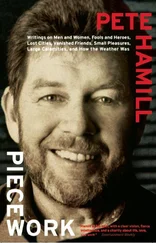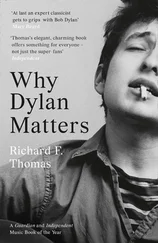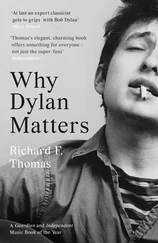“I’d be in the bus, and the guys’d be sleeping or drinking or talking,” he said once. “And I’d look out the window and see these houses with the lights on and wonder how they all lived. The houses looked warm. Safe. You know, normal . I was still a kid, but I knew that it was too late for me to have that kind of life.”
Riding those buses through America, Sinatra also must have known that he could never be a sideman, a part of a group, all for one, one for all. He wasn’t raised that way. He was raised to work solo.
III . When the bombs dropped on Pearl Harbor and the Americans finally entered the war, Sinatra was poised to complete a process that had started with Fiorello La Guardia and was solidified by the baseball triumphs of Joe DiMaggio: the integration of the children of Italian immigrants into American life.
A progressive Republican (in opposition to the anti-Italian bosses of Tammany Hall), La Guardia had been elected mayor of New York in 1933 after a splendid career as the first Italian American ever elected to Congress. In some respects, he was not typical of the immigrant experience. He was the son of a Jewish mother from Trieste and a Protestant father who was born in Foggia, in II Mezzogiorno. Born on Sullivan Street in New York’s Little Italy and raised in Arizona where his father served as a U.S. Army bandmaster, Fiorello spoke Italian and Yiddish and had worked as an interpreter at Ellis Island, an experience that made him a lifelong defender of immigrants. He fought for unions. He fought against all forms of racism. He battled anti-Semitism. As a congressman, he had warned the country about the dangers of Prohibition, urging them to reject the Volstead Act. He predicted that it could not be enforced. Nobody listened, but he was right. Fiorello had passion and language and courage. He became the greatest mayor of New York’s twentieth century, a star on radio, a national figure. New Yorkers were not alone in thinking about him with affection and respect.
DiMaggio was a year older than Sinatra, the son of immigrants from Isola delle Femmine, a tiny fishing port on the northern coast of Sicily, just west of Palermo. His father arrived at Ellis Island in 1902, the mother the following year, and they soon moved to California, where there was work for an honest fisherman. Joe, the oldest of nine children, arrived at Yankee Stadium for the 1936 season and had a wonderful year for a twenty-one-year-old, batting.323 and hitting 29 home runs. He was shy, even aloof, but had uncommon style, both as a player and as a man. As he matured, he got even better. He hit with power and for average and was a superb outfielder. In 1941 he set a record that has never been broken: he batted safely in 56 consecutive games.
In those years before television, DiMaggio was known all over America. He endorsed products. His face adorned magazine covers. Songs were written about him. That awful phrase “role model” wasn’t used in those days; it was enough to be called a hero. DiMaggio was one of them. An American hero. And an Italian American hero too. There were other Italian American baseball players, including Tony Lazzeri before him, and contemporaries such as Frank Crosetti and the shortstop Phil Rizzuto. But DiMaggio was more than a baseball player; he was the epitome of grace. American grace. Italian American grace. Nobody paid much attention to the fact that he kept silent about discrimination against other Americans, including Italian Americans and blacks. That was Joe. As Gay Talese has observed: “He was and has remained an interior man, ever distant, cautious, never in the forefront with a social conscience. At best, a male Garbo.”
To these triumphs of Italian Americans in politics and sports was added another: the sudden arrival of Frank Sinatra as the biggest star in show business. That trio — La Guardia, DiMaggio, and Sinatra — changed forever the way Americans saw Italian Americans. For the first time, Americans with other ethnic origins wanted to be like these children of the Italian migration. And their accomplishments changed the way Italian Americans saw themselves.
The story of Sinatra’s explosive arrival as a major American star is, again, a familiar one, a great show business drama played out on the stage of the Paramount Theater in New York. Timing had something to do with it. The war effort was then under way; the Depression was over; and men and women were, suddenly and astonishingly, earning more money in war plants than they had ever imagined possible. (My father went from a $19-a-week job to one that paid $102.) That meant there was a lot more money to spend on entertainment. And as the young men went off to boot camp or basic training, there were a lot more lonely women in the land.
Sinatra and the Dorsey band were in Hollywood, making a small film called Ship Ahoy, when the airplanes of the Japanese Imperial Navy ended the Depression by bombing Pearl Harbor. Twice Sinatra tried to enlist in the army, and each time he was turned down because of that punctured eardrum. But he was increasingly anxious to go out on his own, convinced that there would be a huge audience for a new kind of music that went beyond the big band format. It would be built around the singer, as vigorous as swing but made lusher, more romantic with the use of strings. Sinatra didn’t want another singer to get there first. Perry Como from the Ted Weems band. Ray Eberle from Glenn Miller. Or even Jack Leonard.
“I didn’t want to be left behind,” he said later. “I wanted to get there first.”
In January 1942, with Dorsey’s reluctant permission, the impatient Sinatra cut four sides for the cut-rate Bluebird Records, using Axel Stordahl as the arranger and employing strings and woodwinds for the first time. These were the first records made on his own, without the dominating accompaniment of a star big band. The tunes were “Night and Day,” “The Night We Called It a Day,” “The Song Is You,” and “The Lamplighter’s Serenade.” The first three would remain part of his repertoire for the rest of his life. He was exultant. Stordahl remembered sitting with Sinatra after the session, listening to acetate disks: “He just couldn’t believe his ears. He was so excited.”
Those records enhanced his reputation and found their way to another huge emerging market: jukeboxes. They also increased his obsessive desire to escape from Dorsey. His 1940 recording with Dorsey of “I’ll Never Smile Again” had spent twelve weeks as the number one song on the Billboard charts, and the same combination had hits with “Stardust,” “Trade Winds,” “Our Love Affair,” “This Love of Mine,” “Dolores,” and “Oh, Look at Me Now.” But those were all perceived as Tommy Dorsey hits, not Frank Sinatra hits. It was the music he made with Stordahl for Brunswick that came closest to what Sinatra wanted to do. He also knew that he had a real opportunity now to fulfill the boast he’d made after seeing Bing Crosby perform in 1935. That process had already begun. In May 1941 Billboard named him the nation’s top male vocalist. The same year’s Down Beat poll (released in January 1942) also encouraged Sinatra’s ambition; for the first time since 1937 Bing Crosby had lost the number one position. The new favorite was Frank Sinatra. The time to leave was now.
Finally, after giving a year’s notice, he broke free from Tommy Dorsey in the fall of 1942. He further infuriated Dorsey by persuading arranger Axel Stordahl to go with him, at a salary of $650 a week, four times what Dorsey was paying him. The departure was bitter. Dorsey was quick to fire people; he could never forgive people who, in effect, fired him. Before granting him a release, Dorsey coldly insisted that Sinatra sign a document awarding Dorsey a third of Sinatra’s earnings for the next ten years, plus an additional 10 percent to Dorsey’s manager. For doing nothing, except letting him go. So much for father figures. By this point, Sinatra was desperate. He signed. He was on his own at last. At first, it wasn’t all that easy. Bookers still were more interested in the big swing bands than in solo singers. They didn’t fully realize that Sinatra’s recordings, played at home, on the radio, or on jukeboxes, were building him a very special audience.
Читать дальше












